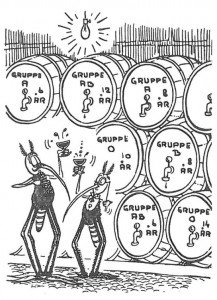
Most mosquitoes can lay a few eggs even if they do not get to a single drop of blood. They simply tap into their food reserves or produce some eggs at the expense of the flying muscles. In order to exploit its possibilities to lay eggs to the full, the female mosquito will attempt to have some blood meals.
The mosquito proboscis consisting of 7 different piercing and cutting parts, and the system is very flexible so that it can search for capillaries under the skin. The mosquito sucks through the labrum, which together with the hypopharynxt form a tube. The hollow hypopharynxt is drilled into the skin with the other mouth parts, and the mosquito uses it to spit into the wound.
How the mosquito finds its prey. Initially, the carbon dioxide we exhale is what makes mosquitoes aware of a potential blood donor nearby. The carbon dioxide only increases the mosquito’s search activity, and is not directly appealing to them. Previously, certain body odor, (lactic acid, etc.) were thought to attractive to mosquitoes. However, this cannot be confirmed. Recent studies show that the heat and humidity radiated from the skin might lead the mosquitoes to us.
Mosquito appeal. When some people are more appealing to mosquitoes than others, it is partly because there is a difference in how much heat and humidity, we radiate. In studies of various peoples’ mosquito appeal, it has been proven that the individual differences are not as significant as it is perceived. Part of the explanation may be of a psychological nature. Some people feel aggrieved when mosquitoes are nearby, and they feel as if all the neighborhood mosquitoes only want their blood. However, the difference probably also lies in the fact that people have different reactions to the bites.




